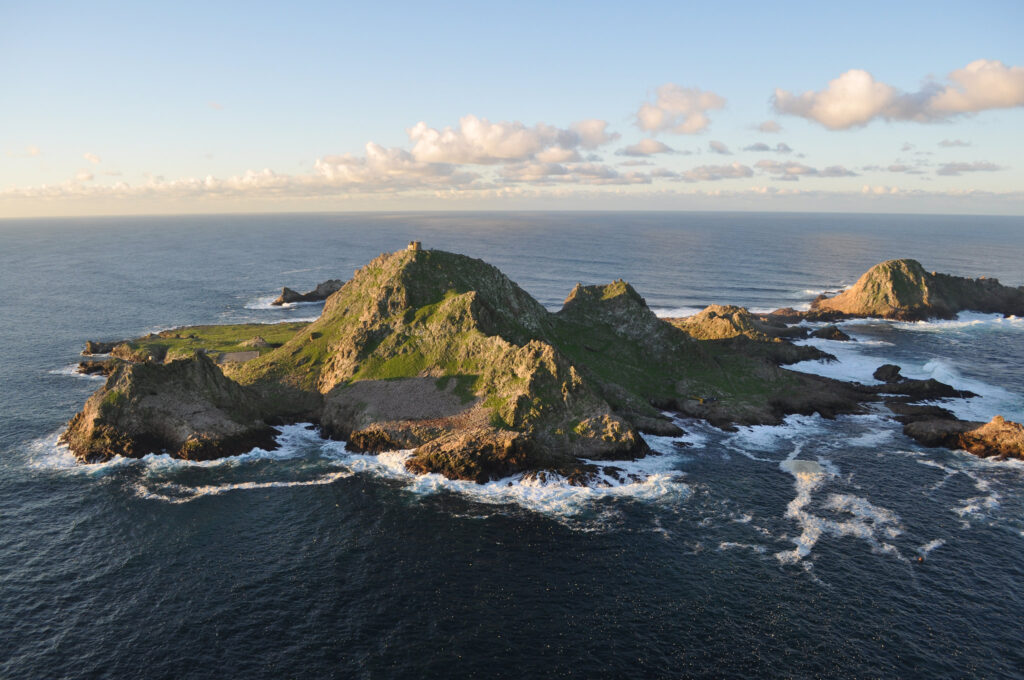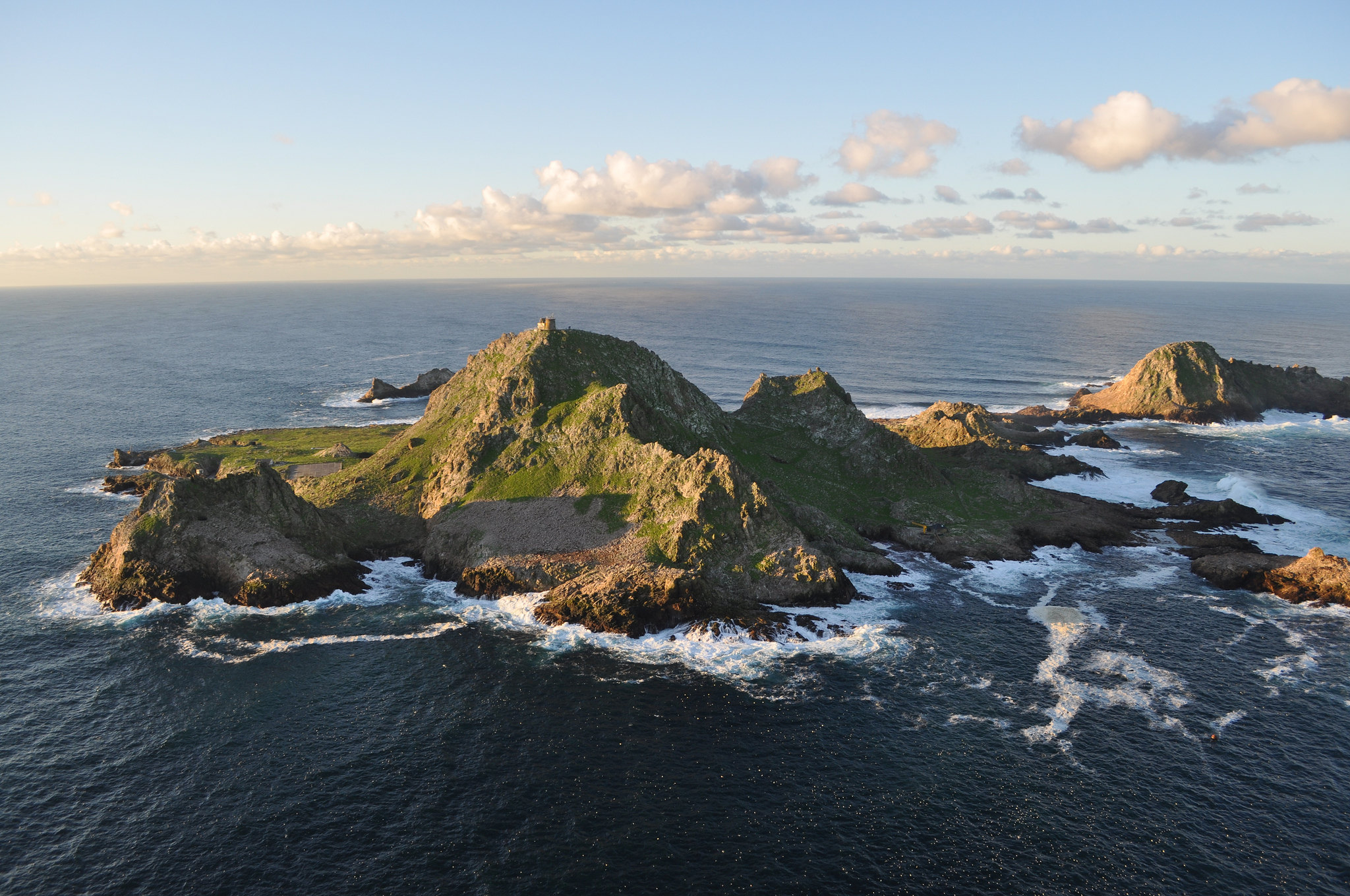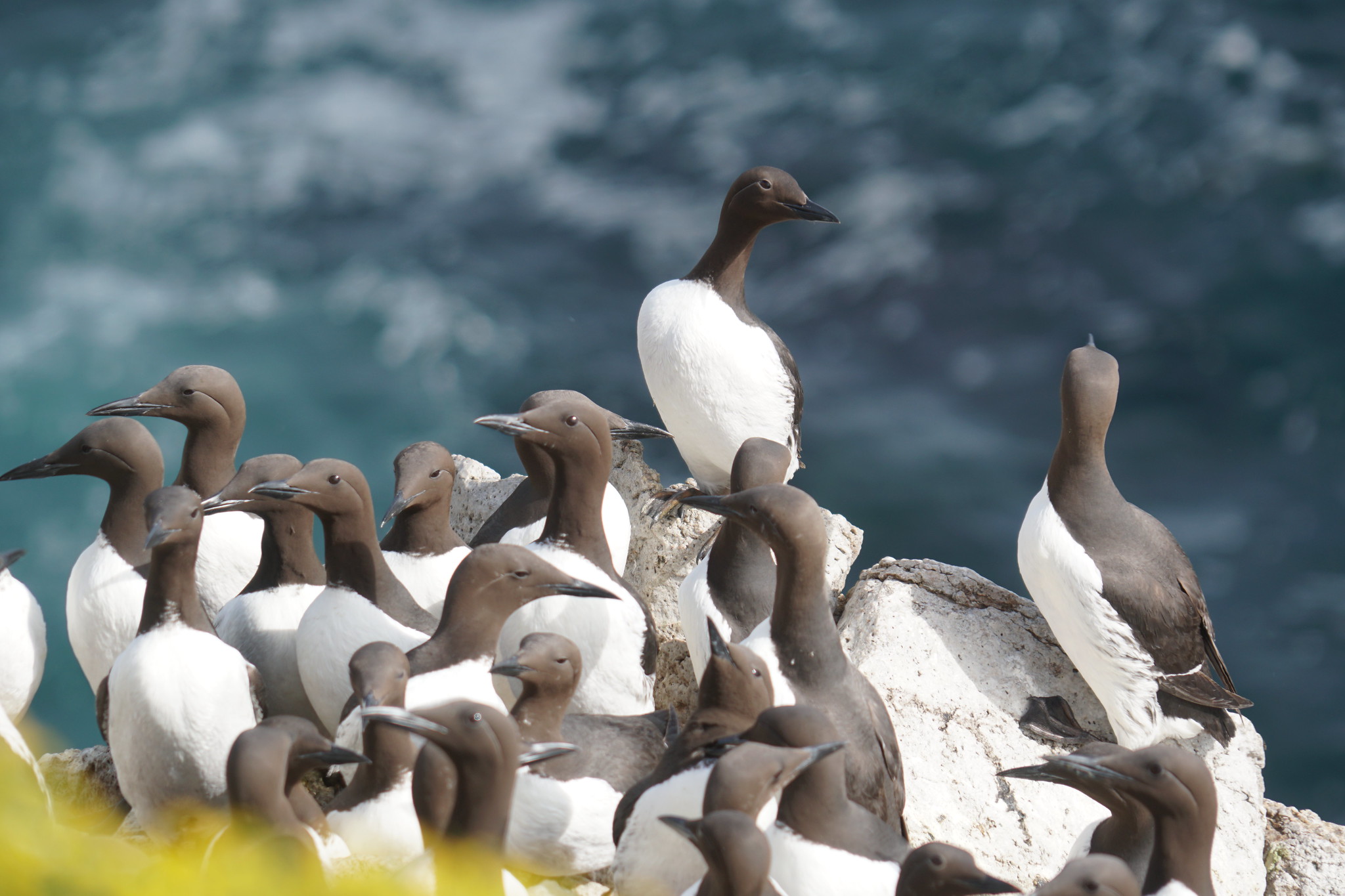The Biden administration is doubling down on a plan to airdrop tons of poison-laced bait on the Farallon Islands near the Golden Gate to eradicate invasive house mice that have overrun the seabird colony and wreaked havoc on its ecosystem.
“The plan has not changed at all,” Gerry McChesney, Farallon Islands refuge manager with the U.S. Fish and Wildlife Service, said during a press conference on Wednesday.
The plan is set to go before the California Coastal Commission for a key vote in June, two years after commissioners gave the proposal a lukewarm reception. The Fish and Wildlife Service temporarily withdrew the plan to respond to the commissioners’ questions and concerns.
About 15 years in the making, the plan calls for dropping about 2,900 pounds of cereal grain pellets laced with the rodenticide brodifacoum on the 121-acre islands located 27 miles off the coast of San Francisco. Researchers said that while nearly 50 other methods were explored — such as using contraceptives, individual traps and pathogens — the rodenticide was the only proven method to ensure the mice do not return.
“We did not want to leave any stone unturned,” McChesney said.
More than 60 islands worldwide have removed invasive mice using the method, officials said. Critics say the poison drops are not always successful and require multiple attempts before they succeed, which endangers other wildlife.
The Farallon Islands are home to the largest seabird breeding colony in the contiguous United States, with up to 350,000 birds, thousands of sea lions and seals and a variety of other wildlife. The islands are part of the Greater Farallones National Marine Sanctuary and serve as a refuge to 13 seabird species. Half of the world’s population of the rare ashy storm petrel uses the islands.
House mice and other animals such as cats and rabbits were introduced to the island when ships landed there in the 19th century. While the cats and rabbits have been removed, the mice population has exploded to an estimated 60,000, or about 500 mice per acre, said Pete Warzybok, Farallon Islands program leader for the Point Blue Conservation Science research institute.
“They’re just covering the ground,” Warzybok said, speaking from the islands. “During this time period, the island is riddled with mouse burrows. There are times when you walk outside and you actually see the ground undulating as the mice are running about below the surface. Quite frankly, it’s a horrifying sight. It’s like something right out of a horror movie.”
Though small, the mice have thrown the island ecosystem off balance, Warzybok said. The mice munch up the seed bank of sensitive plants, making room for invasive plants to thrive. They compete for food with the native Farallon arboreal salamander and eat the local Farallon camel cricket, which are only found on the islands. In some cases, mice were found to have eaten the eggs of some of the many birds that use the islands to breed and roost during their migrations.
The mice have also attracted burrowing owls, which abandon their normal winter migration patterns in favor of the smorgasbord the mice offer in the fall. Once the mice population crashes during the wintertime, the owls turn to another food source: the ashy storm petrel. While only six to 12 or so owls remain on the islands during the winters, they can kill between 60 to 70 petrels each during this time, including breeding petrels. Models by Point Blue found that if the owls were to remain, the ashy storm petrel population could decline by 63%.
While the burrowing owls might prey on some petrels after the mice would be removed, the vacuum of abundant prey would cause the owls to continue their migration rather than remain on the islands, Warzybok said.
Members of the California Coastal Commission raised concerns in 2019 about whether the agencies had adequate plans to prevent other animals, such as gulls and burrowing owls, from ingesting the poison and washing up on local beaches. Others were concerned about the 120-day lifespan of the rodenticide and its potential to pollute soils, nearby waters and wildlife.
The U.S. Fish and Wildlife Service proposes to drop the poisoned bait in the late fall and early winter when bird numbers are lowest. In addition, it plans to use techniques to scare away birds; scour the islands to remove any dead mouse carcasses before scavengers can eat them; and capture burrowing owls and salamanders.
Similar methods were found to be successful in the eradication of rats from Anacapa Islands at the Channel Islands National Park in 2002. Kate Faulkner, the former park official who oversaw the project, said while other birds ingested the poison, the population effects were minor and short-term compared to the long-term benefits of eliminating the rats.
“The long-term benefits are both obvious and undeniable,” Faulkner said during the press conference.
Local environmental organizations, including Marin Audubon and the Marin Conservation League, support the Farallon Islands plan.
In response to the commission’s concerns, the project partners are drafting plans detailing how the poison drop would be monitored and how they would respond should bait be spilled or ingested by large numbers of birds and other species, McChesney said. These types of plans are typically put together after the project plan has been approved, but are being crafted earlier in response to the commission’s concerns.
The project would cost an estimated $2 million and could begin by late 2023, McChesney said.
Richard Charter, a member of the Greater Farallones National Marine Sanctuary advisory council and senior fellow at the Ocean Foundation, said the lead agencies have yet to answer or address questions and concerns raised about the safety of the poison drop. Charter said it is irresponsible for the project leaders not to use less lethal methods such as contraceptive baits before assessing other options.
“It’s like two sides are talking past one another and the proponents seem to think they can just pretend everything is going to be alright but not answer legitimate cogent questions from the coastal commissioners, the sanctuary advisory council and everyone else,” Charter said.
Go to Source
Author: Will Houston




